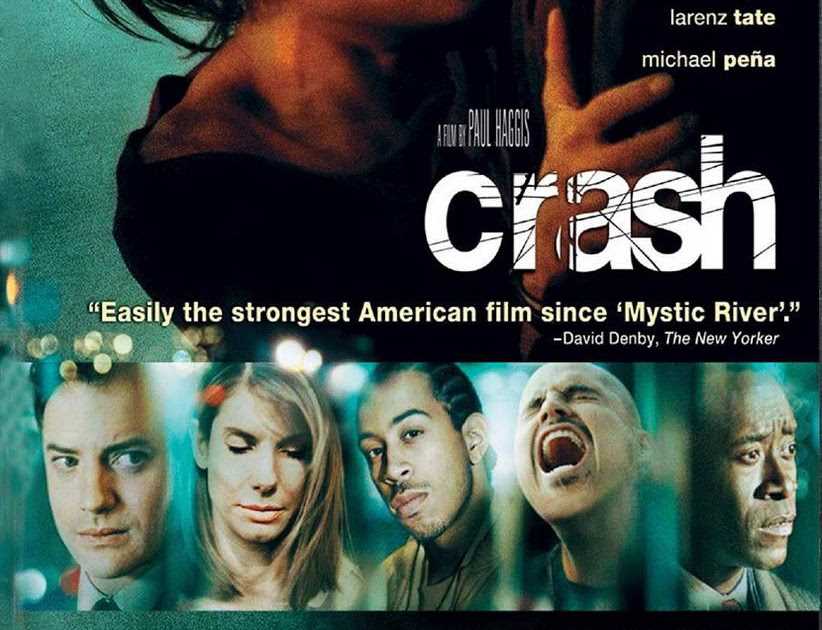
Crash is a thought-provoking and controversial movie that explores themes of race, prejudice, and societal tensions in modern-day Los Angeles. Directed by Paul Haggis, the film features an ensemble cast and intertwining storylines that highlight the complexities of human interactions and the potential for connection or discord.
This article aims to provide answers to some of the questions viewers may have after watching the movie. Through analysis and interpretation of key scenes, character motivations, and narrative choices, we hope to shed light on the deeper meanings and messages embedded in Crash.
The film raises important questions about identity, stereotypes, and the ways in which individuals can unknowingly perpetuate discrimination. By examining these issues from multiple perspectives, Crash forces viewers to confront their own biases and re-evaluate the assumptions they make about others based on race, ethnicity, and social class.
Why did Crash win the Academy Award for Best Picture?
The 2004 film Crash surprised many when it won the Academy Award for Best Picture. While it faced tough competition from other critically acclaimed films, including Brokeback Mountain and Munich, Crash managed to stand out and ultimately win the prestigious award.
One of the reasons why Crash won the Best Picture Oscar is its powerful and thought-provoking narrative. The film explores racial tensions and prejudice in Los Angeles through a series of interconnected storylines. Its depiction of the complexities of human relationships and the underlying racism that exists in society resonated with both critics and audiences.
Furthermore, Crash’s ensemble cast delivered exceptional performances, which were recognized by the Academy. The film boasted an impressive roster of talent, including Sandra Bullock, Matt Dillon, Don Cheadle, and Thandie Newton. Each actor brought depth and nuance to their respective characters, effectively conveying the emotions and conflicts central to the film’s themes.
In addition to its compelling story and performances, Crash also benefited from its timely release. The film premiered in 2004, a year marked by heightened racial tensions and discussions about discrimination. Its exploration of racism and prejudice in a post-9/11 America struck a chord with viewers, making it a timely and relevant cinematic experience.
Overall, Crash’s win for Best Picture can be attributed to its impactful storytelling, outstanding performances, and its ability to capture the social climate of its time. The film’s exploration of race and prejudice continues to resonate with audiences, cementing its place as a significant film in cinematic history.
What is the central theme of the movie Crash?

The central theme of the movie Crash revolves around the concept of racial and social tensions in contemporary Los Angeles. The film explores the interconnectedness of lives and the complex interactions between individuals from different backgrounds and ethnicities. It sheds light on the underlying prejudices and stereotypes that exist in society, ultimately challenging viewers to confront their own biases and examine the consequences of their actions.
In Crash, each character’s story intertwines with others, highlighting the collision of lives and the stark realities that arise from these encounters. The movie portrays a series of seemingly random incidents that all point to the underlying racism and prejudices that exist within the city. Themes of racism, stereotypes, and discrimination are explored through the experiences of various characters, including a racist police officer, a wealthy couple, a struggling immigrant family, and an African American detective.
The film suggests that these prejudices and biases are not limited to any one race or social class, but rather exist in all facets of society. By depicting characters from different backgrounds and social classes, the movie shows that anyone can be both a perpetrator and a victim of racism and discrimination. It challenges viewers to question their own prejudices and assumptions, and to recognize that small acts of kindness or cruelty can have far-reaching effects on the lives of others.
Is Crash based on a true story?
Crash, the 2004 film directed by Paul Haggis, is not based on a true story. Although the movie portrays various racial and social issues that are prevalent in society, it is a work of fiction. Haggis crafted the screenplay from his own experiences and observations, creating a fictional story that explores themes of prejudice, stereotypes, and interpersonal connections.
Crash takes place in Los Angeles and follows the intersecting lives of several characters from different racial and ethnic backgrounds. Through a series of interconnected events and encounters, the film examines the complexities of race relations and the impact of individual actions on others. While the movie’s portrayal of racism and discrimination may have parallels to real-life experiences, it does not depict any specific real events or individuals.
The film’s characters and their stories are fictional, allowing Haggis to explore the larger issues of racism and prejudice in a more nuanced and thought-provoking way. Through its powerful storytelling and memorable performances, Crash encourages viewers to examine their own biases and assumptions, highlighting the interconnectedness of human lives and the potential for change and understanding.
In conclusion, while Crash tackles important social issues and raises awareness about the impact of racism and prejudice, it is not based on a true story. The film is a work of fiction that uses its characters and narrative to shed light on the complexities of racial tensions and the need for empathy and understanding in society.
Who directed the movie Crash?

Crash is a 2004 American drama film that was directed by Paul Haggis. Haggis, who also co-wrote the screenplay, is known for his work as a screenwriter and director in the film industry. His direction of Crash was highly acclaimed, and the movie went on to win three Academy Awards, including Best Picture.
Paul Haggis brought his unique vision and storytelling skills to Crash, creating a thought-provoking and powerful film that explores issues of race, discrimination, and prejudice. With his direction, Haggis effectively navigates multiple intersecting storylines and brings out the humanity in the diverse characters of the movie. His ability to create a cohesive and impactful narrative earned him critical praise and solidified his position as a talented filmmaker.
In addition to Crash, Paul Haggis has directed other notable films such as In the Valley of Elah and The Next Three Days. He has also worked on various television series, including writing and directing episodes of acclaimed shows like thirtysomething and Due South. Throughout his career, Haggis has demonstrated his ability to tackle challenging social themes and create compelling stories that resonate with audiences.
Key Moments or Scenes in Crash
Crash, a 2004 film directed by Paul Haggis, explores themes of racism, prejudice, and interconnectedness through a series of interconnected storylines in Los Angeles. The movie is known for its intense and thought-provoking moments that shed light on the complexities of human relationships and the impact of our actions on others.
Carjack Scene: One of the most memorable scenes in Crash involves the carjack of district attorney Rick Cabot and his wife Jean. The violent encounter leads to a series of events that challenge the characters’ assumptions and reveal their underlying biases. This scene serves as a turning point in the movie, highlighting the destructive power of prejudice and the unpredictability of life.
The Shootout: Another key moment in Crash occurs during a shootout between two police officers, John Ryan and Tom Hansen. The tense confrontation takes place after an argument between the two officers earlier in the film. This scene underscores the deep-rooted racial tensions and systemic issues within the police force, as well as the devastating consequences of unchecked prejudice.
The Invisible Cloak: In one of the most powerful scenes, a Persian shop owner named Farhad tries to buy a gun to protect his store. However, due to his broken English and the cashier’s bias, Farhad is denied the weapon. The frustration and helplessness felt by Farhad encapsulate the struggles faced by many immigrants and minorities who are often treated as outsiders and disadvantaged by societal prejudices.
The Car Crash: The car crash that occurs near the end of the film serves as a symbolic moment of redemption and interconnectedness. Various characters, previously disconnected, find themselves entangled in the aftermath of the accident. The crash becomes a catalyst for self-reflection and empathy, as individuals realize the impact of their actions and the importance of compassion and understanding.
The Hospital Scene: Lastly, the hospital scene between Officer John Ryan and Christine Thayer, an African American woman he had previously mistreated, showcases the potential for reconciliation and growth. Despite their troubled history, Ryan offers comfort and support to Christine, acknowledging his past mistakes. This scene illustrates the complexity of human relationships and the capacity for change and forgiveness.
How did Crash impact society and start conversations about race?

Crash, directed by Paul Haggis, made a powerful impact on society by sparking conversations about race and highlighting the complexities and nuances of racial issues. The film, released in 2004, challenged viewers to confront their own prejudices, biases, and assumptions, ultimately leading to a deeper understanding of race relations in contemporary society.
One of the key ways in which Crash impacted society was by portraying a diverse range of characters and exploring their interactions and conflicts. The film depicted various racial and ethnic groups, including African Americans, Hispanics, Asians, and Caucasians, and presented them in a way that humanized their experiences and showcased the commonality of human emotions and struggles across ethnicities.
The film’s narrative structure, which weaved the stories of different characters together, allowed viewers to see how different individuals from various racial backgrounds were interconnected and influenced each other’s lives. This approach highlighted the interconnectedness of society and how the actions of one person can have far-reaching consequences for others, regardless of their race or ethnicity.
Crash also provided a platform for conversations about race by presenting uncomfortable and controversial scenarios. The film portrayed instances of racial profiling, discrimination, and prejudice, forcing viewers to confront the uncomfortable reality of racial tensions in everyday life. Moreover, the film challenged traditional notions of racism, illustrating that racism can exist not only in overt acts of hatred, but also in subtle microaggressions and implicit biases.
Ultimately, Crash prompted discussions about race by encouraging viewers to examine their own attitudes and beliefs. It called attention to the fact that racism is a deeply ingrained issue that permeates society, and highlighted the need for individuals to actively confront and address their own biases. By starting conversations and raising awareness about race, Crash left a lasting impact on society and contributed to the ongoing dialogue about racial equality and social justice.
Q&A:
How did Crash impact society and start conversations about race?
Crash had a significant impact on society and started conversations about race through its thought-provoking portrayal of racial tensions and prejudices. The film exposed the underlying racism in everyday interactions and challenged viewers to reflect on their own biases. This led to a broader dialogue about race and racism in society, as people began to openly discuss and address these issues. Crash also highlighted the complexity of race relations by breaking stereotypes and showing that individuals are influenced by unconscious biases. Overall, the movie created a much-needed space for conversations about race and paved the way for greater understanding and empathy.
Why did Crash spark conversations about race?
Crash sparked conversations about race because it delved into the uncomfortable and often overlooked topic of racial tensions and prejudices. The film presented various intersecting storylines, each exploring different aspects of race and racism. By portraying characters from different backgrounds and exposing their biases and misunderstandings, Crash forced viewers to confront their own prejudices and engage in conversations about race. The movie’s honest and realistic portrayal of racial dynamics in society stirred emotions and encouraged dialogues about racial inequality and discrimination.
What were the main themes in Crash that led to conversations about race?
Crash addressed several main themes that led to conversations about race, such as racial prejudice, stereotypes, and systemic racism. The film depicted how racism affects individuals from different ethnic backgrounds and how it influences their interactions with each other. It explored the idea that racism is not limited to overt acts of hate but is often subtle and embedded in everyday life. Crash also emphasized the importance of empathy and understanding in breaking down racial barriers. These themes provoked discussions about the complexities of race and challenged viewers to reflect on their own beliefs and biases.
What impact did Crash have on society’s perception of race?
Crash had a profound impact on society’s perception of race by exposing the underlying racial tensions and prejudices that exist in everyday life. The film shattered stereotypes and challenged viewers to question their preconceived notions about different racial groups. It highlighted how individual experiences and contexts shape perceptions of race, ultimately leading to a more nuanced understanding of racial dynamics. Furthermore, Crash sparked conversations and debates about race, creating a platform for individuals to discuss and address racial inequalities in society. Overall, the film played a significant role in reshaping society’s perception of race and promoting a more inclusive and empathetic society.